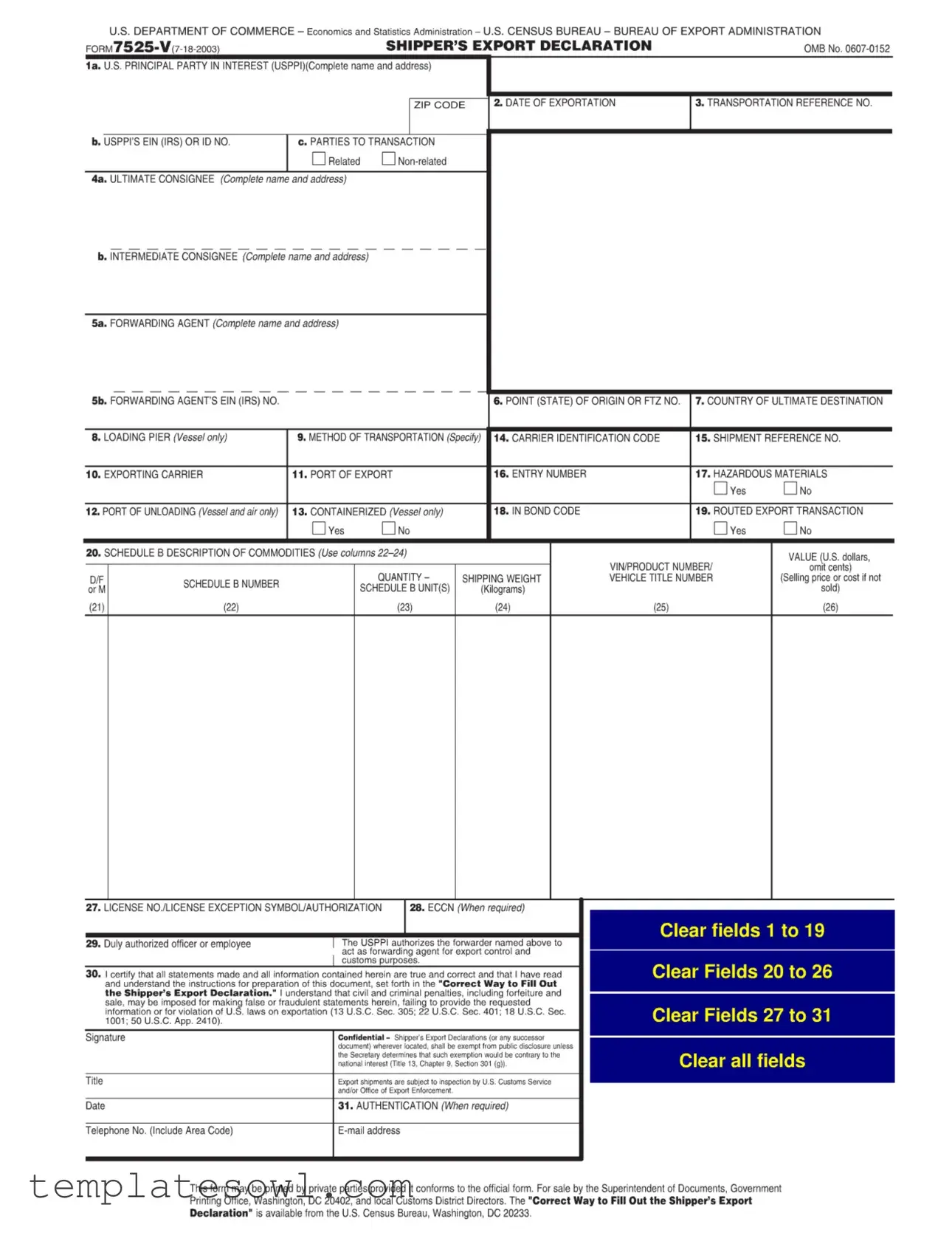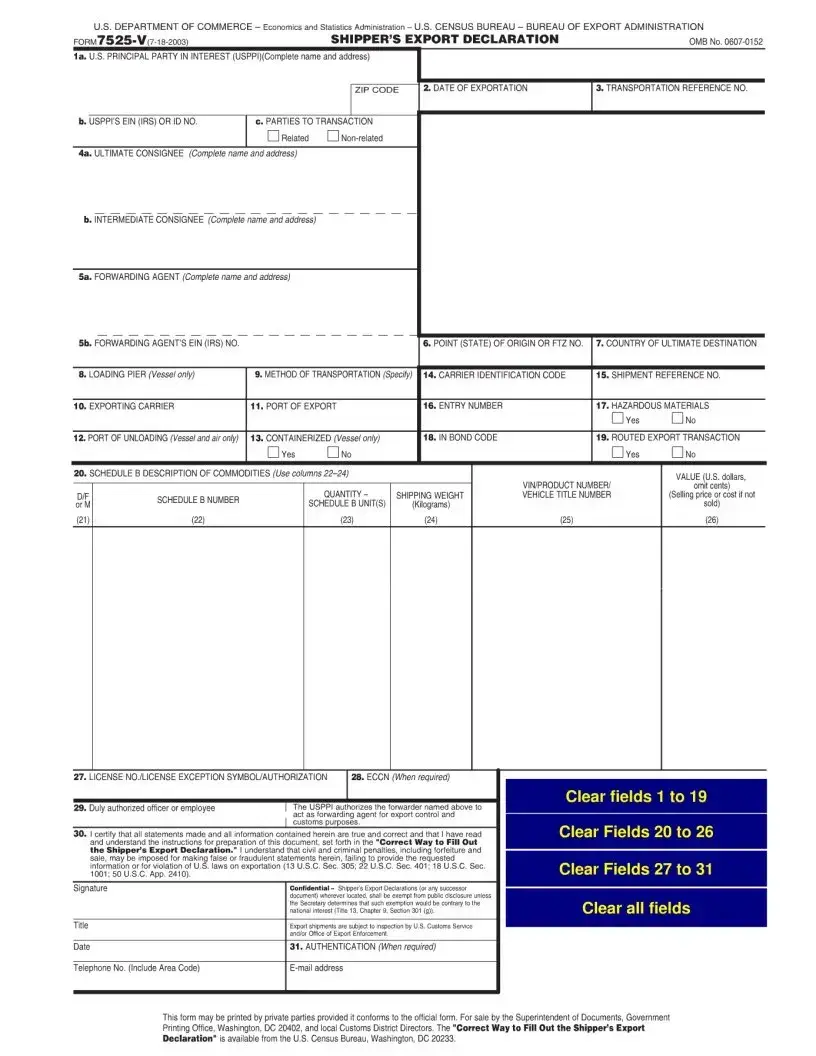What is the purpose of the 7525 V form?
The 7525 V form, also known as the Shipper’s Export Declaration, is utilized primarily to facilitate the exportation of goods from the United States. It provides essential information about the shipment, including details about the parties involved, the nature of the goods, and their final destination. This form supports compliance with U.S. export laws and regulations while assisting in the management of export control and statistical data collection.
Who is required to submit the 7525 V form?
Any U.S. principal party in interest (USPPI)—typically the party that receives the proceeds from the sale of the goods—is required to file this form when exporting goods valued at more than $2,500. Additionally, exporters may need to file it in specific situations involving export licenses or restricted goods, regardless of value. This includes shipments of hazardous materials and those categorized as routed export transactions.
What information is needed to complete the 7525 V form?
The form requires a variety of information, including the names and addresses of the USPPI, ultimate consignee, and any forwarding agents. You will need to indicate the date of exportation, transportation reference number, and the method of transportation. Additionally, details about the shipment, such as the country of ultimate destination, commodity descriptions, and any applicable license numbers, must be provided. Accurate representation of this data is vital to ensure compliance with regulations.
Is there a specific format for filling out the form?
Yes, adherence to the official format is important. The 7525 V form can be printed by private parties, but it must conform to the specifications established by the U.S. Census Bureau. This includes using the correct dimensions, font sizes, and layout as required by regulations. The "Correct Way to Fill Out the Shipper’s Export Declaration" guide can be consulted for additional details on the proper formatting and required information.
What are the consequences of failing to file the 7525 V form accurately?
Failure to provide accurate information or to file the 7525 V form when required can result in serious penalties. These may include civil and criminal charges such as forfeitures and fines. Furthermore, the export shipment may be subjected to delays or holds until compliance is achieved, potentially impacting business relations and logistics. It’s essential to ensure accuracy to avoid these complications.
Can I authorize a forwarding agent to submit the 7525 V form on my behalf?
Yes, as the USPPI, you may authorize a forwarding agent to act on your behalf for exportational purposes. This authorization must be indicated on the 7525 V form. By doing so, you enable the agent to handle the necessary filings and manage compliance with applicable export laws, streamlining the process for all parties involved.
What should I do if my shipment includes hazardous materials?
When shipping hazardous materials, it is crucial to accurately indicate this on the 7525 V form. You must select "Yes" for the hazardous materials question on the form to comply with additional regulatory requirements. This may include providing further documentation relating to the nature of the materials, ensuring that proper safety measures and regulations governing the transport of such goods are followed.
How is the information on the 7525 V form used after submission?
Once submitted, the information collected through the 7525 V form serves multiple purposes. Primarily, it supports U.S. Customs and border security in monitoring and enforcing export laws. Additionally, the data aids the U.S. Census Bureau in compiling trade statistics, which are essential for economic analysis and policy-making. The thorough documentation also assists in the identification of compliance issues or trends within export activities.
Where can I obtain the official 7525 V form?
The official 7525 V form can be obtained from the U.S. Census Bureau or through authorized government agencies. It is also available for purchase from the Superintendent of Documents, Government Printing Office, located in Washington, DC. Ensure that you are using the most current version of the form to comply with any updates in export regulations.

